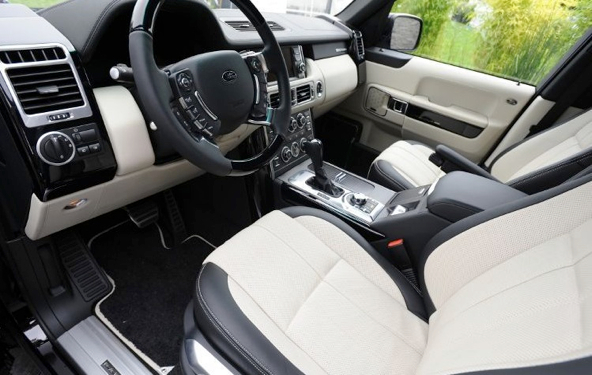Scots success gets 'leathered'19 | 07 | 2011

TO MY MIND, you can’t beat a beautifully tender rare plate of rack of lamb, melting in the mouth with just a hint of rosemary to tease the palate. Serve me that with some fresh new potatoes – and a nice glass of Malbec — and once it’s polished off, I’ll sit back with a satisfied glow.
That of course is the lamb you eat, which in the consciousness has nothing to do with the white fluffy thing that gambols in the fields with its brothers and sisters every spring. They make a lovely image, but I don’t automatically see them on the dinner table. The name may be the same but there the similarity ends.
Bridge of Weir Leather is tucked away on the outskirts of the village and you would never know that this is the heart of an enterprise which provides work for more than 600 people and turns over almost £100 million a year.
These thoughts ran through my mind as I wandered round the Renfrewshire base of what is probably one of Scotland’s surprising success stories.
Bridge of Weir Leather is tucked away on the outskirts of the village and you would never know that this is the heart of an enterprise which provides work for more than 600 people and turns over almost £100 million a year, creating quality upholstery for a vast range of manufacturers in the automotive industry including Volvo, Jaguar, Aston Martin, Range Rover (pictured), Mercedes and Saab.
Thousands of raw cattle skins
What is absolutely stunning is the transformation that takes place within its production buildings. At one end, thousands of raw cattle skins – direct from the abattoir — are piled on pallets and not only is the sight of them at the lower basement of the sore eyes scale, but the sour smell is something to be experienced in only very small doses.
Fast forward to another building at the other side of the site and there you’ll find the softest, finest and most luxurious leather skins being finished off before they are fashioned into seats and fittings for top of the range cars around the world – and the atmosphere is filled with the fabulous aroma of fresh leather.
That’s where the lamb thought process came into play. How many of us look at the cattle in the fields and relate them to the soft leather that we’re sitting on in our car? I’m told one American visitor to the factory asked why they made the skins in that odd shape – failing to see the association with the animals from whose backs they came.
The technology has changed dramatically
The process goes back to 1758 through seven generations of the same family to create the privately-owned company as it is now, a subsidiary of the Scottish Leather Group. The technology though has changed dramatically with, for example, computers calculating how each skin should be cut to get the most from it, avoiding any imperfections. It’s still a labour intensive business though, relying on the skill and expert eye of the worker.
Up to 20,000 hides pass through the factory each week and it has a huge thirst, swallowing two million litres of water every day, supplied from its own private reservoir. But the company claim the highest environmental credentials, leather being one of the earliest recycling industries, taking a by-product of beef and dairy farming and turning it into a highly prized material.
In 2010, the company opened the world’s first leather manufacturing thermal energy plant, every day converting 100 tons of waste fat and trimmings which would otherwise have gone to landfill, into gas for use in the factory.
The global business is tough
Up to two hides are used in an average-sized car and the company has its own designer who is constantly looking at new styles and trends. Technology has also created its own demands, for example, perforated skins which are needed for cars with a ventilated seat option.
Global business is tough, particularly with recent rises in the cost of the raw hides, but the company is optimistic about the future, expanding its presence in the United States with a new division in Detroit and a joint venture in China to supply leather for up to 300,000 locally-built Volvo S40s and S80s every year. They’re also involved with a new leather cutting plant in Mexico with one container of skins leaving Grangemouth Docks every week.
One of their proudest achievements though was in the past – supplying leather for the seats of the Belfast-built De Lorean car — and being paid for them before the company went bust.
Keep up-to-date with all the latest news by following us on twitter.com/scotcars
Alan Douglas